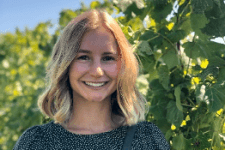
Just before the Covid-19 pandemic brought our world to a halt, I took a one-day weaving class at my local yarn shop. The next day I bought a loom. Though an experienced knitter, it was a somewhat impulsive purchase to quell curiosities I had about the art. Little did I know the pandemic would soon provide a lot of time to experiment. What I didn’t anticipate was how challenging it would be to do that experimentation without access to support from a community of fellow weavers.








